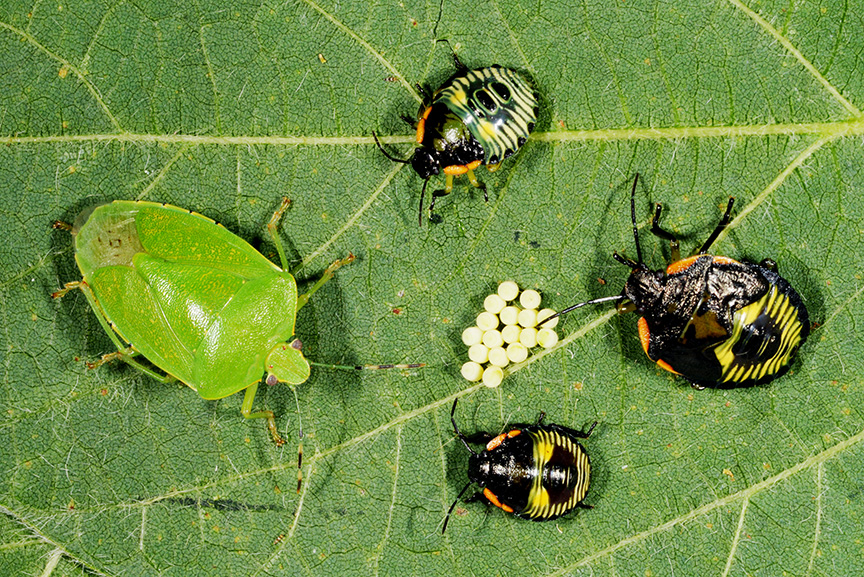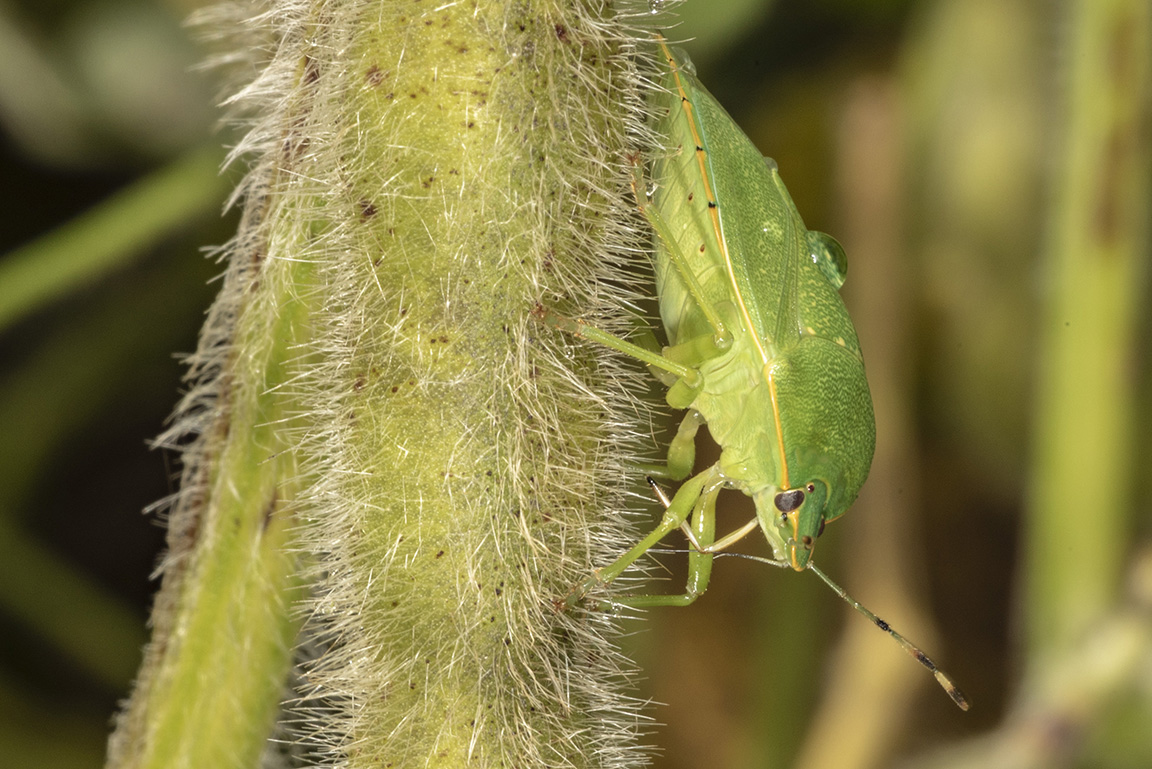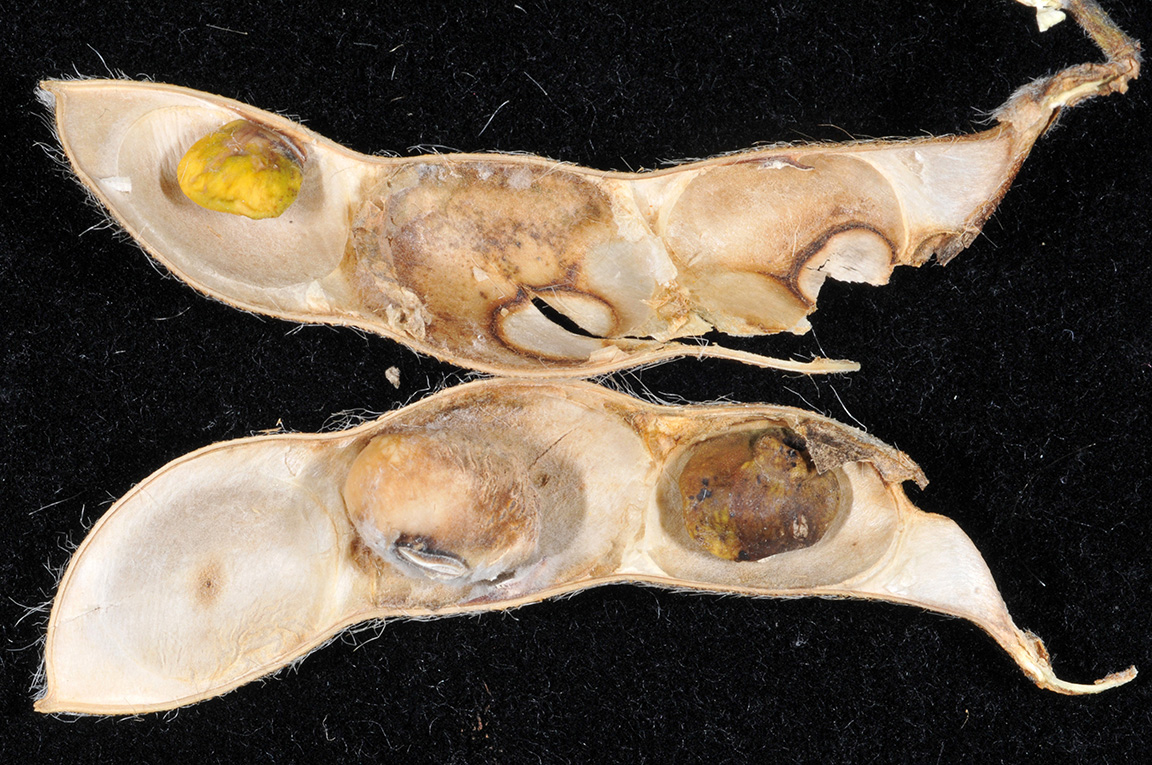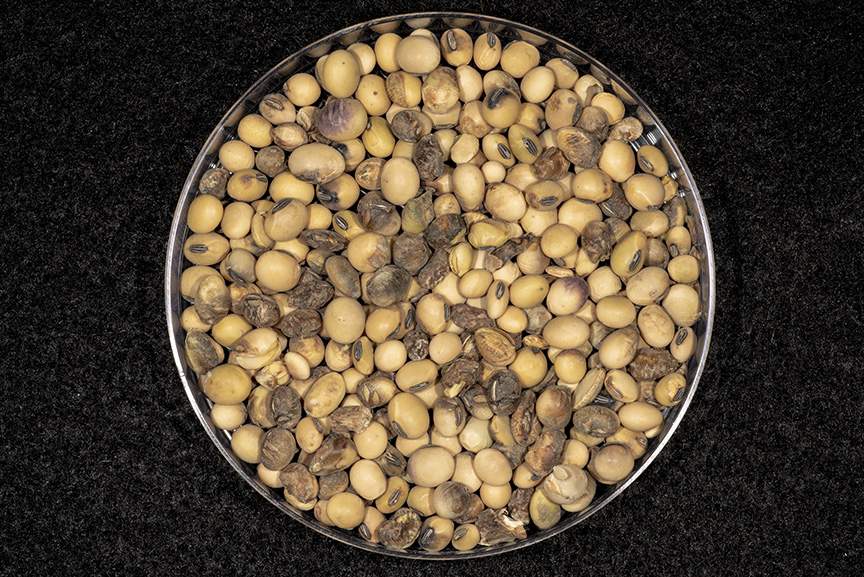With this season’s planting delays, soybean growth stages are anywhere from beginning pod development to near maturity. For the last couple of years, especially last season, there has been a noticeable population of green stink bug in some Indiana soybean fields. Both green stink bug adults and nymphs feed using their piercing-sucking mouthparts. They cause injury to soybean by puncturing pods and sucking fluid from the developing beans. This feeding also introduces bacteria, fungi and yeasts that may cause further damage. Seeds that do develop despite stink bug pod feeding may be smaller, shriveled, and/or discolored. This damage may lower quality, and ultimately reduce yields. Green stink bug may appear in soybean fields from mid-July through harvest time.
Last year, several factors (e.g., heavy rains, warm day/night temperatures, multiple fungal diseases, etc.) combined late in the season to cause an inordinate number of damaged soybean seed at harvest. Many samples were sent to the Purdue Plant & Pest Diagnostic Lab, and all were found to have multiple factors causing the damage. Meaning…green stink bug feeding was one of several contributing causes to shriveled and/or discolored seed.
In sweep-net surveys of soybean fields last season, it was very obvious that green stink bug prefer feeding on pods with well-developed seeds, especially growth stage R6, aka “butter beans.” Currently, there are many fields in the seed-fill stages, more so than normal in early September. However, in our random observations, there doesn’t appear to be as large a population of stink bugs present this year. Because populations vary from county to county and field to field, we recommend sampling soybean in the seed-fill stages. Although sweep-net sampling is ideal for this purpose, just getting out and looking for adult and nymph stink bugs on or around pods is sufficient. A threshold of 40 stink bugs (adult and nymphs) per 100 sweeps is considered a treatment level. Should an insecticide treatment be justified, consider the product’s pre-harvest interval (PHI), that is the number of days from treatment to harvest, label ranges from 14 to 45 days. Recommended insecticides, with PHI’s, can be found HERE. Happy scouting!






